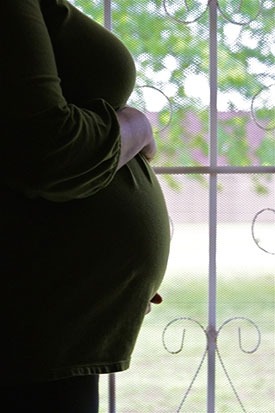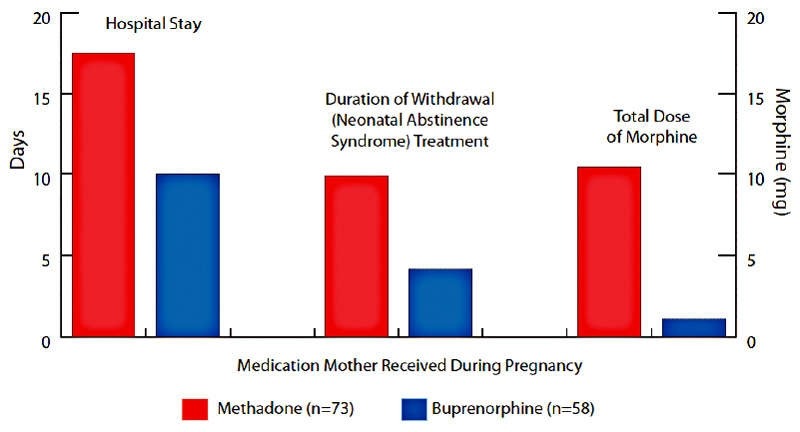
Heroin use during pregnancy can result in neonatal abstinence syndrome (NAS). NAS occurs when heroin passes through the placenta to the fetus during pregnancy, causing the baby to become dependent, along with the mother. Symptoms include excessive crying, fever, irritability, seizures, slow weight gain, tremors, diarrhea, vomiting, and possibly death. NAS requires hospitalization and treatment with medication (often morphine) to relieve symptoms; the medication is gradually tapered off until the baby adjusts to being opioid-free. Methadone maintenance combined with prenatal care and a comprehensive drug treatment program can improve many of the outcomes associated with untreated heroin use for both the infant and mother, although infants exposed to methadone during pregnancy typically require treatment for NAS as well.
A NIDA-supported clinical trial demonstrated that buprenorphine treatment of opioid-dependent mothers is safe for both the unborn child and the mother. Once born, these infants require less morphine and shorter hospital stays compared to infants born of mothers on methadone maintenance treatment.23 Research also indicates that buprenorphine combined with naloxone (compared to a morphine taper) is equally safe for treating babies born with NAS, further reducing side effects experienced by infants born to opioid-dependent mothers.24,25 A NIDA-funded study found that treating NAS babies with sublingual buprenorphine resulted in a shorter duration of treatment than oral morphine, and also resulted in a shorter length of hospital stay, with similar rates of adverse events.26

